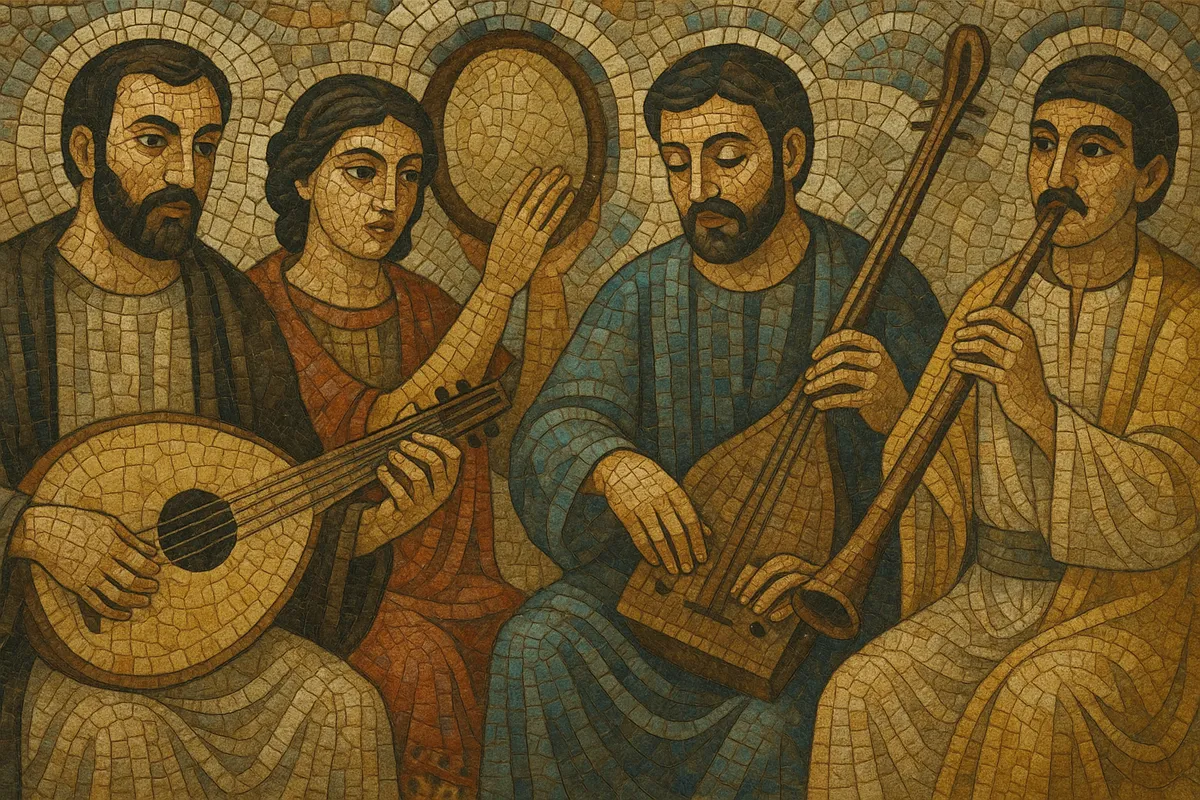Malouf (ma'luf) is the Tunisian branch of the Andalusian classical tradition that took root in North Africa after waves of migration from al‑Andalus in the late 15th and early 16th centuries. It is a suite-based art music practiced by learned ensembles and vocal soloists, built on modal and rhythmic cycles that structure long, carefully paced performances.
Its core large-form is the nūba (nouba), a sequence of vocal and instrumental movements that progresses from free or slow introductions to lively, dance-like endings. The modal system (tab' in Tunisian usage) and measured rhythmic cycles (mizān) organize melodies, ornamentation, and cadences; the singing style emphasizes heterophonic blend, nuanced melisma, and refined Arabic diction. Typical ensembles feature oud, qanun, violin, ney, cello/contrabass, and a battery of frame and goblet drums (bendir, riqq, darbouka), producing a resonant yet transparent texture.
In the 20th century, the Rachidia (al-Rashidiyya) institute codified, taught, and revived the repertoire, helping to define malouf as a national classical music of Tunisia while preserving its Andalusian roots.
After the fall of Granada (1492) and subsequent expulsions, Andalusian Muslim and Jewish communities resettled across the Maghreb, bringing with them courtly music, poetic forms, and performance practices. In Tunisia, these practices intertwined with local Arabic traditions and Ottoman-era cultural currents, forming what became known as malouf—an art-music lineage directly linked to the Andalusian nūba.
Tunisia’s malouf adopted the suite (nūba) as its principal large form. Each nūba is built in a specific modal framework (tab') and unfolds through a recognized sequence of movements, typically moving from unmeasured or slow introductions to increasingly brisk, measured sections. Transmission occurred through master–apprentice lineages, urban cultural clubs, and court/elite circles, where repertoire and stylistic norms were memorized, performed, and gradually localized.
Founded in 1934, the Rachidia (al-Rashidiyya) in Tunis undertook documentation, standardization, and pedagogy, collecting melodies and texts, stabilizing modal and rhythmic nomenclature, and forming large ensembles and choirs. Composers and pedagogues such as Khemaïs Tarnane, Mohamed Triki, and Salah El Mahdi played crucial roles in arranging and teaching the repertoire, while recordings and radio broadened the audience.
Malouf repertory centers on the nūba and related strophic vocal pieces. Modes (tab')—such as Sika, Rasd, Raml al‑Māya, Isbahān, and others—govern interval structures and cadences (qafla). Rhythmic cycles (mizān) articulate sections commonly named m’saddar, b’tayhī, darj, khafīf, and a concluding, more animated ending; exact labels and patterns vary by school but preserve the general trajectory from contemplative to festive.
Today malouf is taught in conservatories and performed by state ensembles, cultural associations, and independent artists. It remains a living tradition: new arrangements and orchestrations coexist with historically informed interpretations, and malouf frequently interfaces with modern concert formats and intercultural collaborations while retaining its Andalusian-Tunisian identity.


